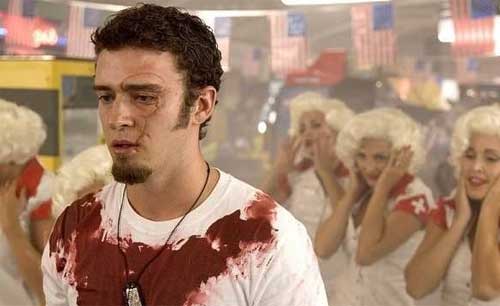Title:
The Eight Diagram Pole Fighter
Director:
Lau Kar-leungReleased: 1983
Starring: Gordon Liu, Lily Li, Wong Yue, Alexander Fu, Kara Hui, Yeung Jing-jing, Wang Lung-wei, Chu Tiet-who, Ko Fei, Ching Chu, Lau Kar-Leung
Plot: When his father and brothers are massacred by the Khitan army after they are betrayed by the treacherous General Pun Mei (Lam Hak-ming). Now seeking sanctuary in the monastery in Mount Wutai Yeung Dak (Gordon Liu) soon adapts his spear technique for use with a pole before he is soon called back to face the Khitans when they capture his younger sister.
Review: Another key title from the expansive Shaw Bros. library with this film being released in the final years of the studio before competition from the rival studio “Golden Harvest” forced them to move away from films and into TV instead. Director Lau Kar-leung though would be responsible for directing many of the studios most memorable titles including the “36th Chamber of Shaolin” trilogy aswell as the likes of “My Young Auntie” and “Heroes of the East”. Kar-Leung while certainly a noteworthy director not only for the Shaw Bros. but the Martial arts genre on a whole Kar-leung was also one of the main choreographers for the Shaw Bros. aswell as for director Chang Cheh on the likes of “The One-Armed Swordsman”.
Collaborating again with Gordon Liu here the relationship between with Kar-leung and Liu is probably one of the more overlooked director / actor pairings which is only the more surprising when you consider that they clocked up a whopping 18 collaborations together with this film unquestionably being yet another noteworthy addition to the list. The film plot wise of course is nothing too different than we have seen countless times before as we open to Yeung Dak alongside his father and brothers showcasing their impressive spear skills before being overwhelmed by the Khitans who have a special staff to counter their spear use. From here though it’s the usual develop winning fighting technique in this case the titular “Eight Diagram Pole Fighting Technique” before heading off to get his revenge on General Pun Mei.
However despite going through some familiar moves the fight scenes we get here are the real draw as Kar-leung crafts some truly draw dropping scenes with the monks of the film showcasing a defensive pole fighting style based around de-fanging wolves which they practice on a wolf statue. It’s a skill which comes in especially handy at the finale as we get a showdown between the Khitans lead by the general and Yeung Dek with his newly found monk brothers who put aside their non-violent ways to help him as the style they practice proves to be equally efficient against human foes in one of the more bloody finales as numerous henchmen find themselves toothless. While the fight scenes here might be less numerous than in other films in the Shaw Bros. Catalogue, Kar-leung limits himself to a mere 3 fight scenes, he makes them so memorable and integral to the plot itself that here less really is more while the flying headbutt in the finale is something to behold.
The journey however is really were the strength of the film lies as we see Yeung Dak go from a hot headed youngster to eventually finding his peace and heading off into the wild seemingly to continue the teachings he learns at the monastery than return to his violent ways. What only adds to this journey is the fact that he is initially turned away from the Monastery leading him in a memorable scene to suddenly shave his head with a blade and burn holes into his skull with incense sticks. Even after this act of self-mutilation they feel he is still too full of anger to become a monk leaving him to develop the titular fighting style off in a cave as he remains determined that he can get accepted by the monks.
An easy film to watch and well deserving of its status as one of the best titles in the Shaw Bros. back catalogue even if it did come during the dying days of their film productions this film at the same time equally provides a gentle introduction to those curious about the genre or the Shaw Bros. legacy.






















